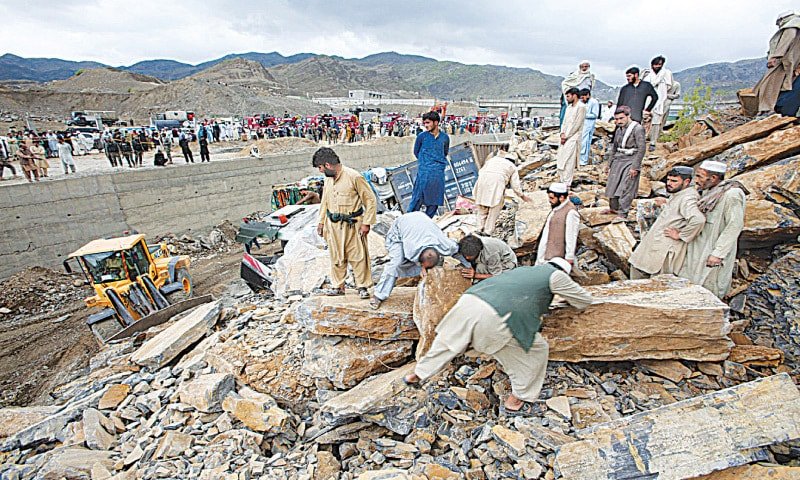On Tuesday, a massive Torkham landslide buried over two dozen trucks in northern Pakistan, killing at least six persons and injuring many more.
The death toll rose as rescuers, including Army Engineers and Army Urban Search and Rescue Teams, assisted in the relief and rehabilitation work near the Afghan border.
After the Torkham landslide, six dead have been recovered so far, but many people are still trapped beneath the rubble as rescue attempts continue. The vast majority of those killed and injured are Afghan residents.
According to media sources, more than 15 meters of rubble have been cleared from the road, and heavy machinery is being used to remove the remaining debris.
The sad tragedy occurred when a section of the mountain crumbled after being struck by lightning during the region’s severe rain and thunderstorms.
The cause of the landslip could not be determined immediately. According to several neighbors, the National Logistic Cell (NLC) only a few days ago conducted controlled blasting of the site for the customs terminal’s development. Officials from the NLC could not be reached for comment on the incident.
They said that some vehicles took fire as a result of an explosion in a gas cylinder used by the drivers for cooking.
According to local sources, two excavators from the Afghan side of the border were the first to arrive at the scene early in the morning and quickly began removing debris from the trapped vehicles.
Later in the day, Peshawar Corps Commander Lt-Gen Hasan Azhar Hayat and Khyber Deputy Commissioner Abdul Nasir reached the spot and supervised the rescue operation.
The army’s urban, search and rescue teams along with Rescue 1122, local police, staff of the district administration, and hundreds of local volunteers participated in the rescue operation that continued till the filing of this report in the evening.
Army engineering corps provided several dumper vehicles, special search cameras, rescue radars, steel cutters, life locators, and other related earth-moving and excavation-related machinery for rescue operations.
Fingers were also pointed at the NLC for failing to supply any necessary apparatus for the rescue effort while they were occupied for the last eight years building the much-touted custom terminal.
Later that day, the Khyber House verified the deaths of three transporters, all Afghan nationals, and the injuries of three more.
